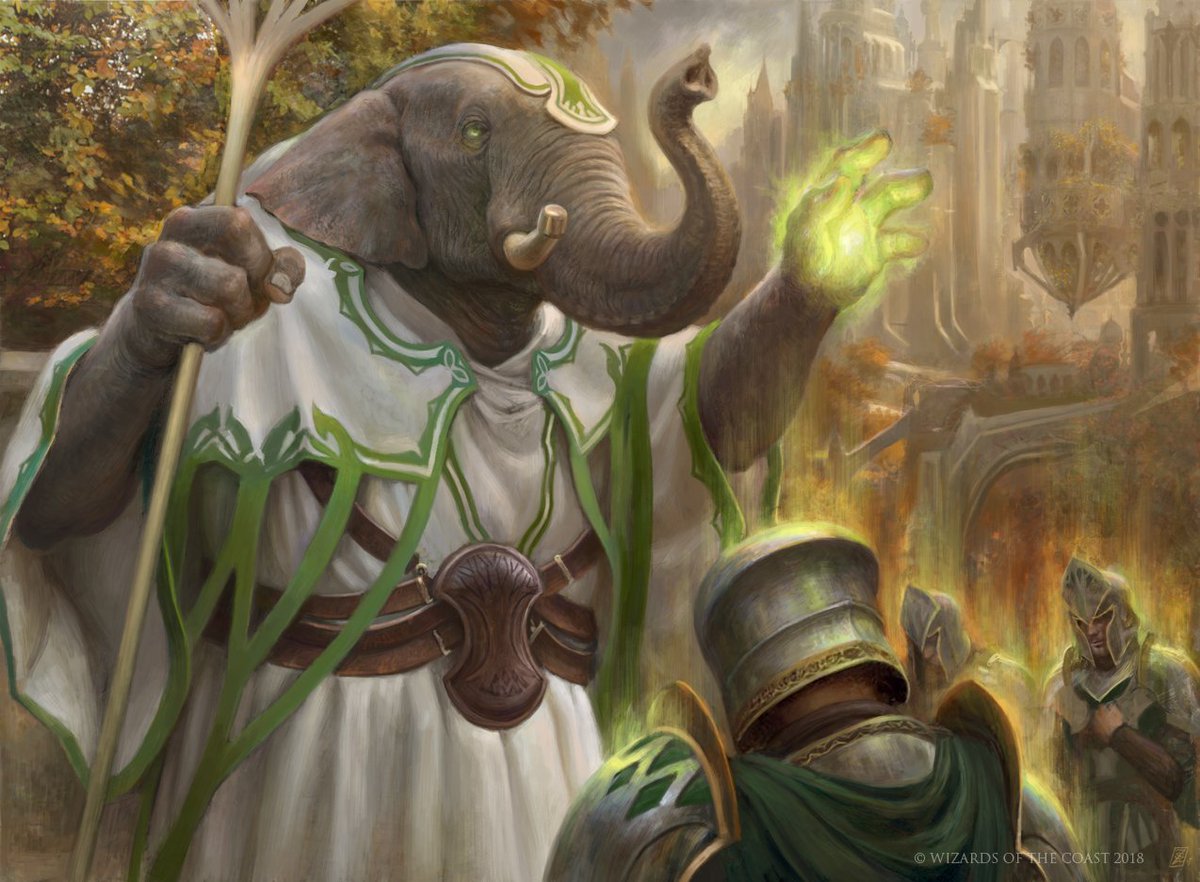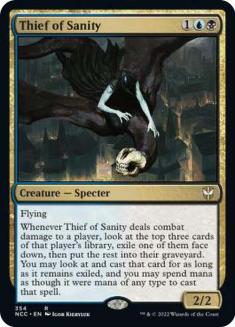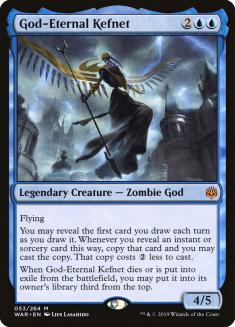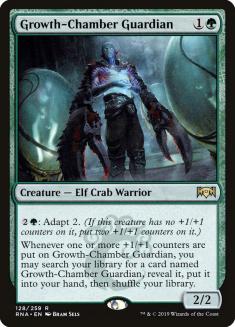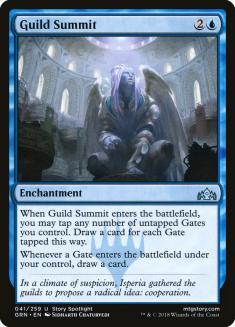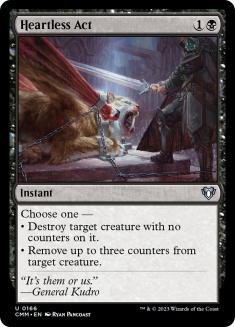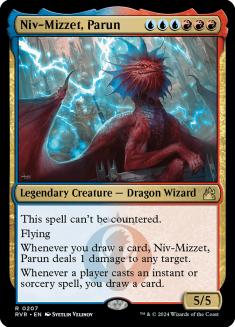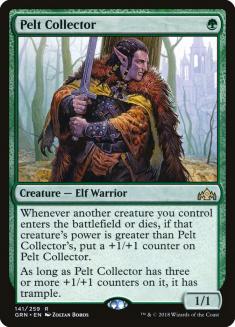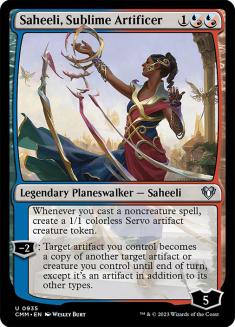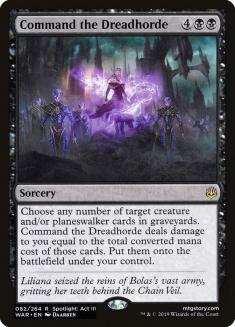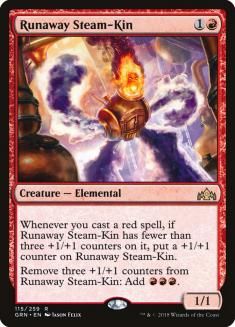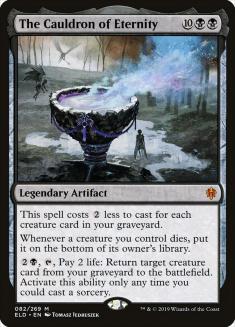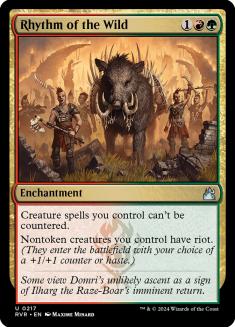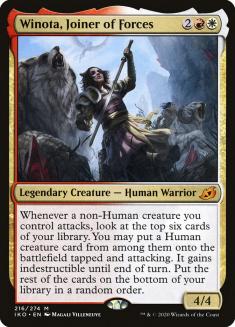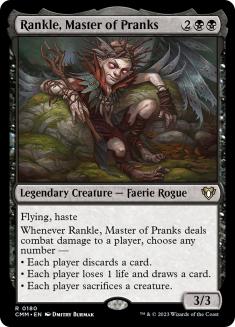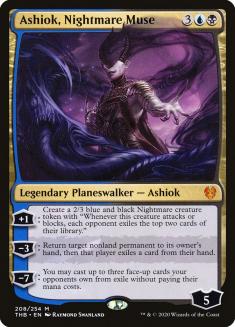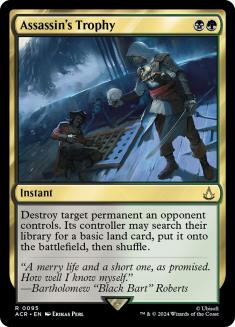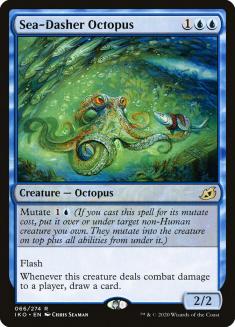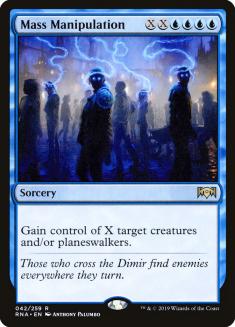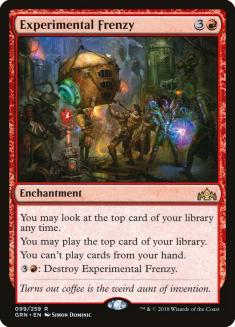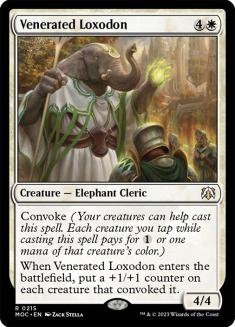There’s no question that the Standard we play today looks nothing like the Standard we were playing a year ago. Beyond the obvious introduction of new and powerful cards, there has also been a fundamental shift in goals within a game of Magic. Sam Black wrote a fantastic article last week about Haymaker Magic and how it invalidates many of the ways we used to think about individual cards.
My article today is an attempt to look at some of the strongest cards that have fallen by the wayside as we’ve shifted our approach. Why, though? If these cards have been invalidated, what’s the purpose of taking a tour through Magic’s underachievers?
The secret of this article, and in fact of all the “Top 10”-style articles I put out, is that we’re actually talking about deckbuilding. The question I receive more than any other is just an extremely broad, “How do I start building competitive decks?”
For me, deckbuilding is always an attempt to answer a specific question. The question that starts so many decks, both casual and competitive, is “How do I maximize a specific card?” Articles like the “The Top 10 Modern Cards In Ikoria: Lair of Behemoths” are designed to alert deckbuilders to the correct cards to focus on in the early days of a set’s release. Meanwhile “The Top 10 Cards To Blink With Thassa, Deep-Dwelling” attempted to narrow the deckbuilding window to the best possible synergies for a specific card.
Today’s article finds us deeper into what is quickly looking like a solved format. I have faith that my fellow writers will competently guide you through that metagame with the crucial sideboard guides and spicy tech. I see it as my job to do some double-checking. Is the format truly solved? Or have we just allowed powerful cards that could potentially break us out of this quagmire fall by the wayside? If these cards truly are invalidated, figuring out exactly why can leave us ahead of the game either at rotation or after bans. Explorations like this are the sparks that ignite the flame of deckbuilding.
So why Top 10 lists? Because they’re fun! I’m a firm believer that our brains are most engaged when we’re enjoying the act of learning. By presenting the information in a debatable, engaging, easily accessible format, I’m trying to trick the reader into starting their own path into deckbuilding. When you’re disagreeing with my rankings, you’re actually flexing your deckbuilding muscles. The points that refute my exclusion of Thief of Sanity from this list are actually telling you exactly how and why you should be building your own deck around the card.
There’s an often-stated perception that Magic readers only want sideboard guides and decklists. I don’t believe this. I just think these are the easiest articles to engage with because they skip the legwork in favor of the conclusion. To be clear, there’s absolutely nothing wrong with this, and sideboard guides and decklists are the lifeblood of Magic content. Saving readers time and effort is incredibly valuable.
Ultimately, though, the sideboard guide’s end goal is maximization of fun. As someone who previously tried to engage with Magic under a severe time crunch, skipping the arduous legwork of sideboard construction to get to the fun of winning games makes lots of sense to me. My conclusion based on this observation is that if I’m going to talk deckbuilding to a wide audience, my primary job is to present fun frameworks in which to do so. If we learn something along the way, even better. On to the list.
Honorable Mentions
A lot of the honorable mentions are cards that are invalidated by other cards within the Top 10, so they have an extra level of invalidation to penetrate before they can even think about seeing play. Plenty others fall prey to Sam’s theory re: the death of card advantage.
It’s wild how many of these cards previously defined the format. Niv-Mizzet, Parun; Pelt Collector; Thief of Sanity; Command the Dreadhorde… all were Public Enemy No. 1 at some point in the not-so-distant past. I want to keep these cards in my memory banks, but I would be surprised if any get the chance to shine again.
10. The Cauldron of Eternity
Limiting Factors: The Cauldron of Eternity was probably the most-brewed-around card upon the release of Throne of Eldraine. It represented significant mana savings on some of the most fearsome threats in the format, and the setup of Vantress Gargoyle and Merfolk Secretkeeper seemed reasonable. As we know, Ikoria Standard has resoundingly identified Agent of Treachery as the best reanimation target. But it also found a far more efficient way to cheat Agent of Treachery onto the battlefield with Lukka, Coppercoat Outcast. Yorion Jeskai Lukka gets to play real Magic cards in the place of setup cards and has an optimal Turn 5 that somehow involves two Agent of Treachery triggers. There’s nothing The Cauldron of Eternity can do that compares to Yorion Jeskai Lukka, and the absence of any midrange Magic dooms a seemingly powerful repeatable reanimation spell.
Potential Circumstances for a Return: If decks can find configurations that appropriately challenge Lukka’s ability to produce Agent of Treachery via spot removal, then it seems like the next way to cheat Agent of Treachery onto the battlefield should deserve new consideration. The problem is that Yorion Jeskai Lukka is not actually reliant on its namesake card, and other decks warping themselves to simply account for Lukka is unlikely to force the deck out of the metagame. A Cauldron of Eternity-based approach to producing Agents will always be both more linear and slower than that of Lukka. This is a card that is going to have a hard time coming back around in the absence of bans.
9. Rhythm of the Wild
Limiting Factors: If you commit to playing Rhythm of the Wild, you’re doing so because you believe adding haste or +1/+1 to your four- and five-drop will carry you to victory. Unfortunately, many of Gruul’s best options in that range already have haste. If they don’t, then there are more explosive ways of providing the ability, such as the curve employed by Gruul Fires.
+1/+1 is not enough to alter the vulnerability of Gruul’s creatures, since one of the deck’s few bright spots is a natural resilience to damage-based removal like Deafening Clarion. Cards like Lava Coil are a true rarity. As a pure damage upgrade, +1/+1 is simply not impactful enough for the era of haymaker Magic.
Potential Circumstances for a Return: The genuinely meaningful text on Rhythm of the Wild may be its anti-countermagic clause. As decks become more focused on resolving the one haymaker that runs away with the game, the odds of countermagic becoming an important part of the format increase. Rhythm of the Wild lets the Gruul decks hard-punish things like Azorius Control, which has seen a resurgence of late. More importantly for Rhythm of the Wild’s future, it can potentially be used to protect its own haymaker.
I’ve played Rhythm of the Wild in Historic’s Naya Winota deck and been very impressed with its ability to both enable my combo and my beatdown Plan B. While current Winota decks are all over the map in terms of color requirements, it feels like a Naya build that gives up some of the ability to hard-cast Agent of Treachery could have real potential.
Creatures (32)
- 4 Legion Warboss
- 4 Arboreal Grazer
- 4 Hanged Executioner
- 4 Agent of Treachery
- 4 Gilded Goose
- 1 Kenrith, the Returned King
- 4 Charming Prince
- 2 Bonecrusher Giant
- 1 Gallia of the Endless Dance
- 4 Winota, Joiner of Forces
Lands (21)
Spells (7)

While it’s a hard sell for the mutate decks to abandon Umori, the Collector, I have found that the games where I get to just resolve my Auspicious Starrix are very hard to lose. Maybe these decks need to consider Rhythm of the Wild as well?
8. Rankle, Master of Pranks
Limiting Factors: Companions. A clear example of a card punished by the addition of the eighth card in hand, Rankle, Master of Pranks is no longer able to meaningfully restrict an opponent on resources. With aggressive Black lists being hard pushed towards Obosh, the Preypiercer and all of the odd creatures, Rankle is left without a home, despite spending some time as one of the most powerful creatures in Pioneer.
Potential Circumstances for a Return: It’s hard to imagine Rankle ever living off resource restriction again, so that means the other two abilities will have to carry the day. Since we know small card advantage is not going to cut it in the present world, it seems like a reusable Liliana’s Triumph is the best bet.
However, the only deck that could potentially have a soft spot to this effect would be something built around the mutate mechanic. Given how much of the format is packing sacrificial fodder from Omen of the Sun, Legion Warboss, Shark Typhoon, and the like, I just don’t see Rankle coming back to prominence any time soon.
7. Find // Finality
Limiting Factors: Sizing plus efficiency is everything when it comes to sweepers right now, and Finality has a real problem accounting for the Flourishing Fox problem — especially since it is two mana more expensive than widely played options. Finality got to shine in circumstances where battlefields were bogged down and sizing mattered. Neither is presently true. The most widely played companions, Obosh and Yorion, both survive -4/-4.
As far as Find is concerned, it’s just a form of card advantage and we’ve discussed how little that is worth at length. However, there is one possible exception to this rule.
Potential Circumstances for a Return: I would again point to Mutate as the potential home for Find // Finality, based chiefly off the power of Find. In attrition matchups, the Mutate deck is capable of rebuilding from very few resources. The question is always going to be whether it’s worth it to pass on Umori, but it’s hard to fully leverage a four-mana creature with no immediate impact against the controlling options in the format. At the least, Mutate needs to consider sideboards that abandon the Umori plan. While a double Raise Dead is far from the most exciting card I’ve ever seen, it’s both mana efficient and flexible, two key points when it comes to sideboard cards.
6. Ashiok, Nightmare Muse
Limiting Factors: Ashiok, Nightmare Muse is just a torchbearer for a whole class of planeswalkers that have big efficiency problems. Liliana, Dreadhorde General and Garruk, Cursed Huntsman belong in the same class of card. In old Modern, there was a widely held belief that if you were ever paying five or more mana for a card, it had to be winning you the game. Standard was a place where flexible five-mana cards could remain on the battlefield and accrue advantages over time. With the introduction of cards like Winota, Joiner of Forces; Lukka, Coppercoat Outcast; and Fires of Invention, the rules have changed, and the knockout punches can now start as early as Turn 4. Add in vulnerability to Mystical Dispute, and it’s easy to see why Ashiok isn’t a world-beater.
Potential Circumstances for a Return: I just can’t make a case for cards like Ashiok presently. It’s an amalgamation of spot removal and slow cascading advantage that just doesn’t sync up with what the format is about at all. Three-mana planeswalkers like Narset, Parter of Veils and Teferi, Time Raveler play these games better, and can do so at a dramatically reduced cost. Ashiok needs a format shake-up.
5. Assassin’s Trophy
Limiting Factors: Assassin’s Trophy is one of the most versatile removal spells ever printed and sees play in every format… except Standard. Cards make their presence felt as they enter the battlefield these days and dealing with them after resolution is usually a lost cause. Not only does Assassin’s Trophy have bad timing, it allows your opponent earlier access to their haymakers. If a single expensive spell can snowball a game, it stands to reason that you should avoid ramping your opponent.
Potential Circumstances for a Return: Here’s the big question — if card advantage doesn’t matter, and every deck has the capacity to double or triple their net mana, does giving your opponent an extra land on any turn other than the first few actually matter anymore? Isn’t it more important that you answer the mana engines and force an opponent to play something resembling a fair game of Magic? Most decks can beat an Agent of Treachery hard-cast on Turn 6. Nobody can beat two Agent of Treachery triggers on Turn 5. Don’t we just have to start bending decks to account for the things that immediately beat us, not the things that eventually could?
Planeswalkers (2)
Lands (26)
Spells (52)
- 2 Forest
- 6 Plains
- 1 Island
- 2 Banishing Light
- 4 Assassin's Trophy
- 4 Kaya's Wrath
- 3 Oath of Kaya
- 4 Guild Globe
- 4 Golden Egg
- 4 Doom Foretold
- 2 Dance of the Manse
- 4 Wolfwillow Haven
- 4 The Birth of Meletis
- 4 Agonizing Remorse
- 2 Elspeth Conquers Death
- 1 Elspeth's Nightmare
- 1 Shatter the Sky
Sideboard

4. Sea-Dasher Octopus
Limiting Factors: Say it with me — card advantage doesn’t matter. Sea-Dasher Octopus is also missing a best friend to mutate. Spectral Sailor is fine, but it just feels like there should be something better.
Potential Circumstances for a Return: Sea-Dasher Octopus is the one card on this list that could benefit from some new prints the most. A one-mana play that really shines when mutated upon would be an upgrade, but more than anything Sea-Dasher Octopus needs a two-mana counterspell that really punishes opponents throughout the game. Some kind of Wizard’s Retort, Silumgar’s Scorn-esque conditional countermagic would be a wonderful check on the nonsense of the format, and I’m keeping my fingers crossed that Core Set 2021 delivers.
Card advantage can matter if you can use it to deny your opponent all access to the game. If that happens, then I still believe this card has to potential to be one of the most powerful non-companions in Ikoria when all is said and done.
3. Mass Manipulation
Limiting Factors: Agent of Treachery plus Yorion is everything Mass Manipulation wishes it could be.
Potential Circumstances for a Return: It’s hard to believe that we’re in a format where something has the capability of going larger than Mass Manipulation, and it’s occurring at five mana. Command the Dreadhorde has the exact same problem. Big spells can’t be the poles of the format when a larger effect potentially can be achieved earlier in the curve.
2. Experimental Frenzy
Limiting Factors: While the card advantage strike holds somewhat true here, there’s also the companion problem. With the printing of Obosh, the Preypiercer, it’ll be extremely challenging for the type of red deck that has historically benefited from Experimental Frenzy to ever consider an even-mana card. Add in the absence of Runaway Steam-Kin, and Experimental Frenzy finds itself squarely on the bench.
Potential Circumstances for a Return: Even if card advantage no longer matters, there has to be a point where cards become an exception. No one is suggesting Ancestral Recall wouldn’t matter. Experimental Frenzy has to be approaching that threshold. If so, it’s far more likely that the Obosh problem is what is holding the card down. This means that there’s a large incentive to find nonred decks capable of benefiting from Experimental Frenzy.
Read on.
1. Venerated Loxodon
Limiting Factors: The best deck in the format plays multiple sweepers maindeck and can increase sweeper density in sideboard games. With most decks possessing zero capacity for rebuilding, initial explosions must be good enough, and despite being a free 4/4 that buffs your team, Venerated Loxodon is somehow falling short. Lurrus of the Dream-Den obviously disincentivizes high converted mana costs in most aggressive white decks, but it’s possible that Lurrus is just tricking white aggressive players into deckbuilding mistakes.
Potential Circumstances for a Return: Yorion Jeskai Lukka is presently doing a good job of accounting for aggro strategies, but the mirror may continue to pull the deck in a direction that plays fewer sweepers. As that happens, a hyper-linear approach to aggro might have a chance to shine.
Creatures (35)
- 4 Loyal Pegasus
- 4 Healer's Hawk
- 4 Venerated Loxodon
- 4 Venerable Knight
- 4 Faerie Guidemother
- 4 Giant Killer
- 3 Gingerbrute
- 4 Stonecoil Serpent
- 4 Alseid of Life's Bounty
Lands (6)

Most aggressive white decks have leaned on Lurrus of the Dream-Den, but I don’t think one spell per turn is actually going to enable recovery against decks that can answer your first rush. You need true reloads, and Experimental Frenzy is the way to go. This deck retains the explosive Venerated Loxodon draws with a laughable amount of one-drops and has ways to take to the skies to avoid Omen of the Sun tokens. Plus, there’s nothing like playing mono-bad cards to own the Agent of Treacheries. If Venerated Loxodon can reclaim metagame share, there are real ripples that result which could reshape the metagame from the ground up.
While our exploration revealed plenty of absurdly powerful cards that truly have been invalidated by format shifts, there are also some glimmers of hope that feel under-explored right now. Think about why other powerful cards have failed to find success and see if there are outdated assumptions or crutches in deckbuilding that need to be put to bed. I’m not giving up on this format yet, and even if we fail, we’ve laid good foundation to be ready for future changes.

